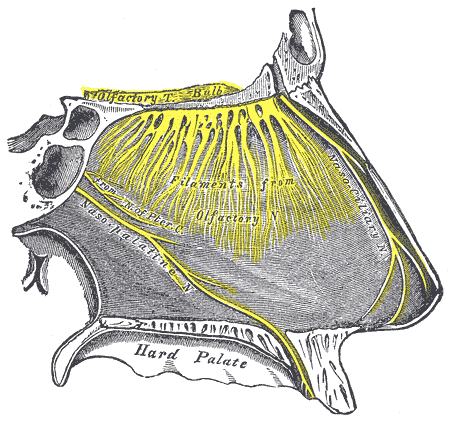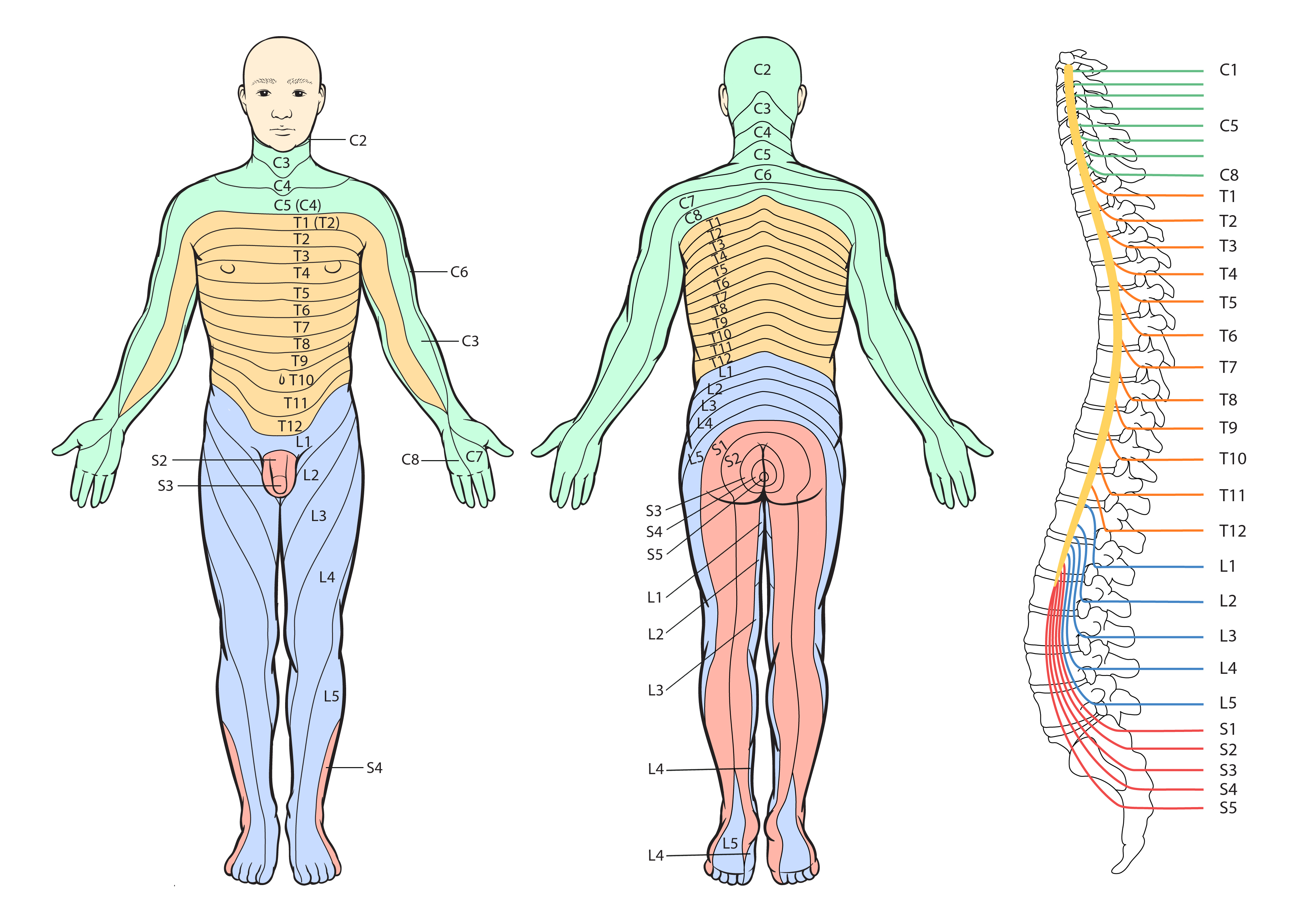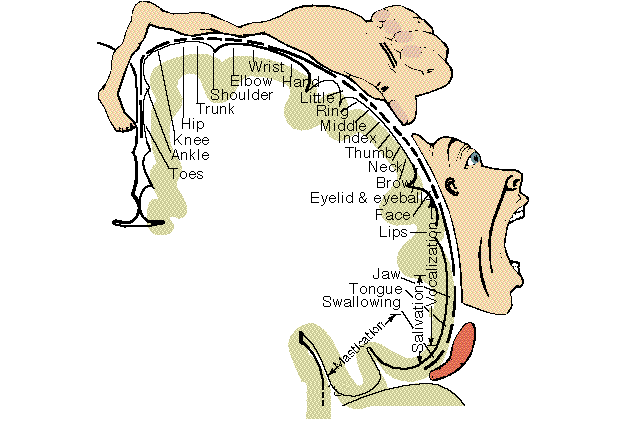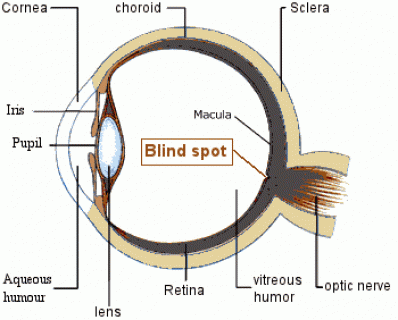Introduction
We are normally equipped with five special senses; sight, taste, hearing, smell and touch. In this lab we will look at three of the five.
The sense of smell is usually combined with taste. But can stand on its own quite often. When you pick up a scent the receptors in your nose are actually binding tiny airborn chemicals that came from the item you are smelling. So those warm chocholate chip cookies you smell, you are actually having tiny particles of the cookies binding to receptors in your nose.
Fig 1 (Gray's Anatomy Atlas) - Yellow are nerve filaments that receive chemical signals of smell.

The sense of touch varies throughout the body. There are regions of the body that have a higher density of touch receptors than other parts. Think about where on your body you have the most sensitive touch. Think.... Think..... Think.... Well if you thought of face, palm of hands, genitals then you are right. Those areas have the highest density of touch receptors on the body. The entire body can be mapped out in what are called dermatomes. These are areas of the body that are connected to a particular spinal nerve. Each spinal nerve maps to a set area of the body (Fig 2). Within these areas there are higher density spots that have more receptors. When looking at the brain you can see how much area the face and hand comand compared to the rest of the body (Fig 3).
Fig 2  . .
Fig 3

Sight is one of those senses that can have large extremes from individual to individual. And with modern science we have been able to minimalize most of the variations. With contacts, glasses and laser surgery almost any decrease in vision can be addressed. Even blindness has seen some reversal as of late with cornea transplants and computerize eyes. The eyes are able to see due to the photoreceptors that are embedded in the retina. There are two types, rods and cones. All the photoreceptors run to a central point where the optic nerve leaves the eye. This point is often referred to as the 'blind spot'. One of the experiments in this lab will help you find your 'blind spot' (Fig 4). To find out more about the pathway the information takes as it enters the eye until it reaches its destination in the brain take a look at this video.
Fig 4

Materials
- 10 Household items with various odors (could be apples, lemons, cherry soda, etc)
- 1 Plastic cup (or similar item) to hold various combinations of liquids and solids
- 1 paperclip or cork with two pins
- Partner to work on experiment
|